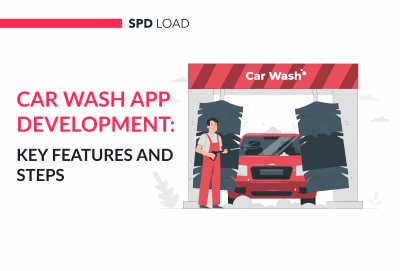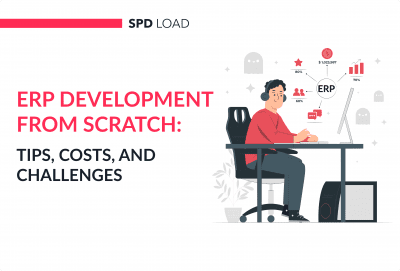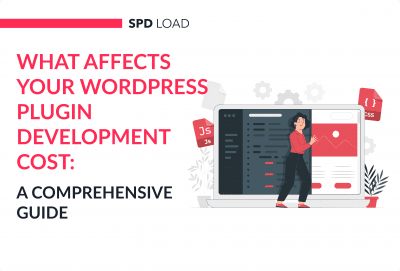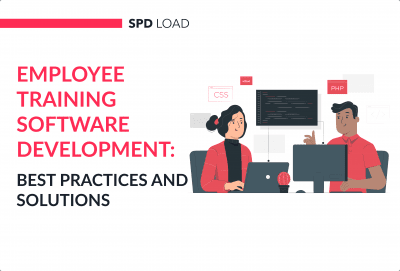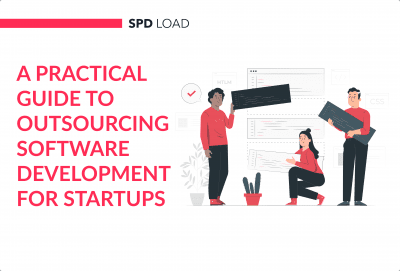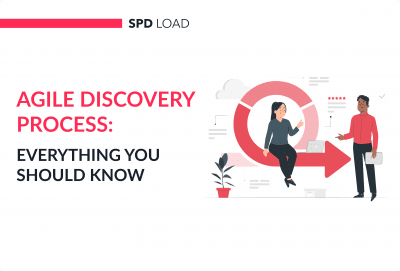Custom Software Development Costs in 2025 (Full Breakdown)
- Updated: Nov 14, 2024
- 9 min
What’s the actual price tag for building a custom software solution?
With hourly rates ranging from $40 to $150+ per hour and projects easily hitting thousands of hours, it pays to understand what impacts development costs.
This article offers a complete guide to custom software pricing, including:
- A definition of custom software development
- Typical cost ranges
- A full breakdown of the key factors that influence the price
- Hidden expenses to account for
- Budgeting advice to plan your project
Whether you’re a startup planning an MVP, a Fortune 500 company replacing legacy systems, or anything in between, read on for a detailed analysis of custom software development costs in 2025.
Learn how to transform your MVP into a fully-fledged product with our tips on from MVP to full-scale product.
Transform your ideas into reality with custom software tailored just for your business – contact us today!
What is Custom Software Development?
Custom software development is the process of planning, designing, developing, launching, and maintaining a software solution per requirement.
It’s a basic software development process, but with strict adherence to specifications that answer the following questions:
- Who will be using the software products?
- When will the software be used?
- How accessible will the software be?
- How will the software be used?
If you like to rebuild a generic solution to make it your brand product per requirements, then it’s custom software development. Most enterprise software falls in this category.
Another example of custom software development is making software that has some sets of features that are not present in the market to solve some given features.
Effective strategies for building a brand from scratch can transform your vision into reality.

How Much Does It Cost to Develop a Custom Software?
The cost of creating custom software ranges between $120,000 to $220,000. This figure is not residual, because the cost is constantly increasing due to inflation and the rising cost of software development services around the world: from the U.S. to India.
However, the exact cost of developing your software depends on the pricing model, which is:
- The complexity of the solution,
- Your team type,
- The location of your team.
Let’s discuss developmental costs per each pricing model.
Costs Based on Software Complexity
The complexity of the software is the set of entities, functions, user roles, software size, and how they interact within the system. Simply put, the functionality of your cross platform determines how sophisticated it is.
Complexity is also affected by the UI/UX design, as the more characters in its user interface, the more sophisticated it is.
For example, if you want to create a corporate website, you might need a map of the location, and a form to gather information from users.
This will be less complex than creating the MVP of a SaaS eWallet cross-platform that uses machine learning to offer optimized solutions.
As such, the website development cost for a corporate site is less than an average SaaS development price.
This is because the SaaS platform has multiple user roles, medium-sized software, more functions, and higher entities.
Thus, it costs more than custom web development.
According to complexity, you can price custom software by basic complexity, average complexity, and highly complex.
Let’s take a look at the price of building a custom software per complexity:
| Complexity Level | Cost, $ |
| Basic | 100,000 |
| Average | 150,000 |
| Complex | 220,000 |

We will discuss the details of each complexity level later. Now, let’s focus on further cost breakdown by the type of team.
Costs Based on Team Type
Another factor that determines the price of your software solution is your type of development team. In the table below, we’ll compare the cost of hiring 4 types of teams.
For illustrative purposes, we’ll assume that you’re creating a solution of average complexity:
| Type of Team | Cost, $ |
| The local development company, the US | 200,000 |
| In-house, the US | 220,000 |
| Freelance developers | 60,000 |
| Outsourced agency, Ukraine | 90,000 |
Are you confused about what each team type entails? Let’s break them down for you.
- In-house Developers
These are custom software coders working inside the startup, as an employee of the organization.
They receive day-by-day instruction from the management and have an apt understanding of the solution being created.
- Local Development Company
A local development company is a software solution provider that’s located in the same country as your startup.
For example, a startup in the United States partnering with a dedicated development team that’s also in the same country.
Hiring a software application developer is an expensive option for startups in high-income nations like the United States.
- Freelancers
Freelance custom software programmers are independent developers who are not full-time employees of any company.
These types of developers accept contracts, and build to specification, or sometimes at discretion.
- Outsourced Agency
An outsourced agency is a team of software developers that offers developmental services from a foreign location.
They require cross-border transactions and are experienced in creating solutions for clients on a global scale.

Costs Based on Team Location
Your team’s location is a major determinant of the bespoke software development cost.
For example, the average cost of custom software development in Eastern Europe is $90,000, while the same software products will cost $220,000 in the US.
Below is a more descriptive spreadsheet of costs defined by the team’s location. Feel free to check out our article on the top 10 countries for outsourcing software development for more insights.
| Country | Cost, $ |
| Australia | 150,000 |
| The USA | 220,000 |
| The UK | 180,000 |
| Western Europe | 160,000 |
| Eastern Europe | 90,000 |
| South Asia | 70,000 |

Now that you have an apt understanding of different pricing models, let’s discuss some factors that affect those costs.
Factors Impacting Custom Software Costs
The cost of a custom software solution is affected by several factors.
These factors are constant irrespective of the team type and location.
These factors are:
- The complexity of the software
- The development team you’re partnering with
Let’s discuss each of the factors to consider during cost estimation.
Find the best TypeScript developers for your project.
Software Complexity
The complexity of custom software varies with:
- The technology required to develop the software products,
- The number and level of developers required to create the solution.
We’ll discuss each of these factors and help you understand how they affect overall development cost.
As defined earlier, complexity entails the number of roles, integration, design creation, and functionality in the software.
The higher the number of characters within the solution, the greater its complexity.
Also, solutions with more features are more complex than those with lesser features.
The only exception is instances where those features are sophisticated ones like blockchain, machine learning, or AI.
To know how complex software is, then first identify the following:
- The seniority of developers needed to create the solution,
- The skill-set required in development and maintenance,
- Number of object types that should be managed in a cloud server
- The tech stack needed to build the solution,
- Certifications and licenses are required.
Based on these, complexity can be classified into basic, average, and highly complex. Let’s discuss each type of complexity in detail.
Basic Complexity
By basic complexity, we refer to custom software that majorly provides users with general information.
In some instances, it gets data from users, but they’re usually minimal.
An example of software with basic complexity is Blogger.
Most CRM-based cross-platforms form in this category.
If you’re interested in how to build CRM from scratch, our guide will give you all the tools and insights you need.
Average Complexity
These types of software have multiple basic and complex functionalities.
Although junior developers can build them, they still require input from senior developers on a number of complex features.
This type of software is the most common for startups and scale-ups.
An example of software in this category is BigOven. The mobile app has a basic complexity because its main function is to provide users with cooking recipes.
Difficult Complexity
This type of custom software has many sophisticated functionalities, APIs, entities, and user roles.
Building this type of software requires top-notch expertise from senior developers and a lot of development long term.
An ideal example of custom software of high complexity is QGIS, a geographic information system.
This software helps scientists and researchers analyze and predict geographic features like sea levels, wind speed, etc.

Another important cost-determining factor to consider is the team type you’re partnering with.
The Development Team
Your preferred team affects the price of hiring developers in multiple ways. Software development cost is affected by the following:
- The seniority and experience of the developers involved,
- The location of the development team,
- The vendor’s business focus.
Let’s discuss each of these points briefly.
-
The Seniority of Developers Involved
Prices charged by developers vary with the seniority of developers involved in creating a custom software solution.

Another team-related factor that affects software project cost is the location of the development team.
-
Location of Development Team
For example, the average custom software development pricing by a U.S.-based team is about three times more expensive than one developed by a Ukraine-based team.
The final cost differs per geographical area because of the following:
- Minimum wage,
- Cost of living,
- Workforce availability.
To get a better understanding of how price varies by team location, check out the section on “cost defined by team location” above.

-
The Vendors’ Size and Business Focus
Size and business focus are other factors to consider. How?
Software development companies charge different fees based on their preferred tech stack, and their size.
For example, blockchain-centric companies will charge lower to create an eCommerce blockchain solution, than others. Discover eCommerce startup ideas that fit the latest trends and customer demands.
This is primarily due to the availability of experienced programmers in this field within their domain.
Also, based on resources from SoftwareWorld, Thinkmobile, and Clutch, we found that size of the outsourcing agency affects cost.

For trusted IT partners, explore the best IT outsourcing companies listed here.
Now that you have an apt idea of the factors impacting custom software development pricing, we’ll discuss some unforeseen costs you might encounter.
Hidden Costs of Custom Software Development
When creating custom software, you should consider some hidden costs needed to make your software products successful.
Those costs are:
- Marketing,
- Maintenance.
Both hidden costs should be factored upfront before web app development commences.
Let’s discuss what both entail.
Marketing Costs
The marketing cost is the amount expended on making your solution known to its target users.
Marketing cost should be x2-x3 of the initial development price/annum.
That is, if the cost estimate of developing new software is $50,000, then your marketing budget should range between $100,000-$150,000 yearly.
This cost will be expended on the following:
- On-site, and off-site SEO,
- Email marketing,
- Information architecture,
- Social media marketing,
- PR,
- Product Hunt launches.
- And more!
Some of this money will also be spent as an overhead cost for the marketing team.
Looking for effective marketing tools? Here are some top email marketing software platforms to consider for your business.

Another cost implication to consider is maintenance. Let’s discuss this.
Maintenance Costs
Ideally, the maintenance price tag is expected to be X2 of the development cost/annum.
For example, if the total cost of developing software is 50,000, then the cost of maintenance is expected to be about $100,000.
Your maintenance cost may differ from this if you’re creating a highly sophisticated solution that requires some legal compliance from the government.
An ideal maintenance cost will include spending on:
- Email services,
- SSL certificate,
- Domain name,
- Hosting,
- iOS and Android app store hosting services
- Technical support.
This cost keeps your software running, and provides a quick fix during downtime, or when an error occurs.
Maintenance costs exist throughout the solution’s lifecycle.
If you’re planning to build an app, these detailed guides on Android app development costs and iOS app development costs will help you navigate the financial aspects.

Now that you have an idea of some hidden bespoke software development costs. What’s more?
From concept to creation – launch your marketplace with SPDLoad!
Want to Develop a Custom Software?
Calculating the cost of custom software requires an expert analysis based on specific needs. A one-size-fits-all breakdown is not accurate due to multiple factors.
Let’s connect to explore what a tailored software solution could do for your business.
Our developers can provide an accurate estimate of costs and suggest strategies to maximize outcomes while minimizing expenses.
Bonus Infographic
For your convenience, we decided to create a summary of our in-depth guide. In it, you will learn what the custom software development cost depends on and what factors you should focus on when setting a development budget.





